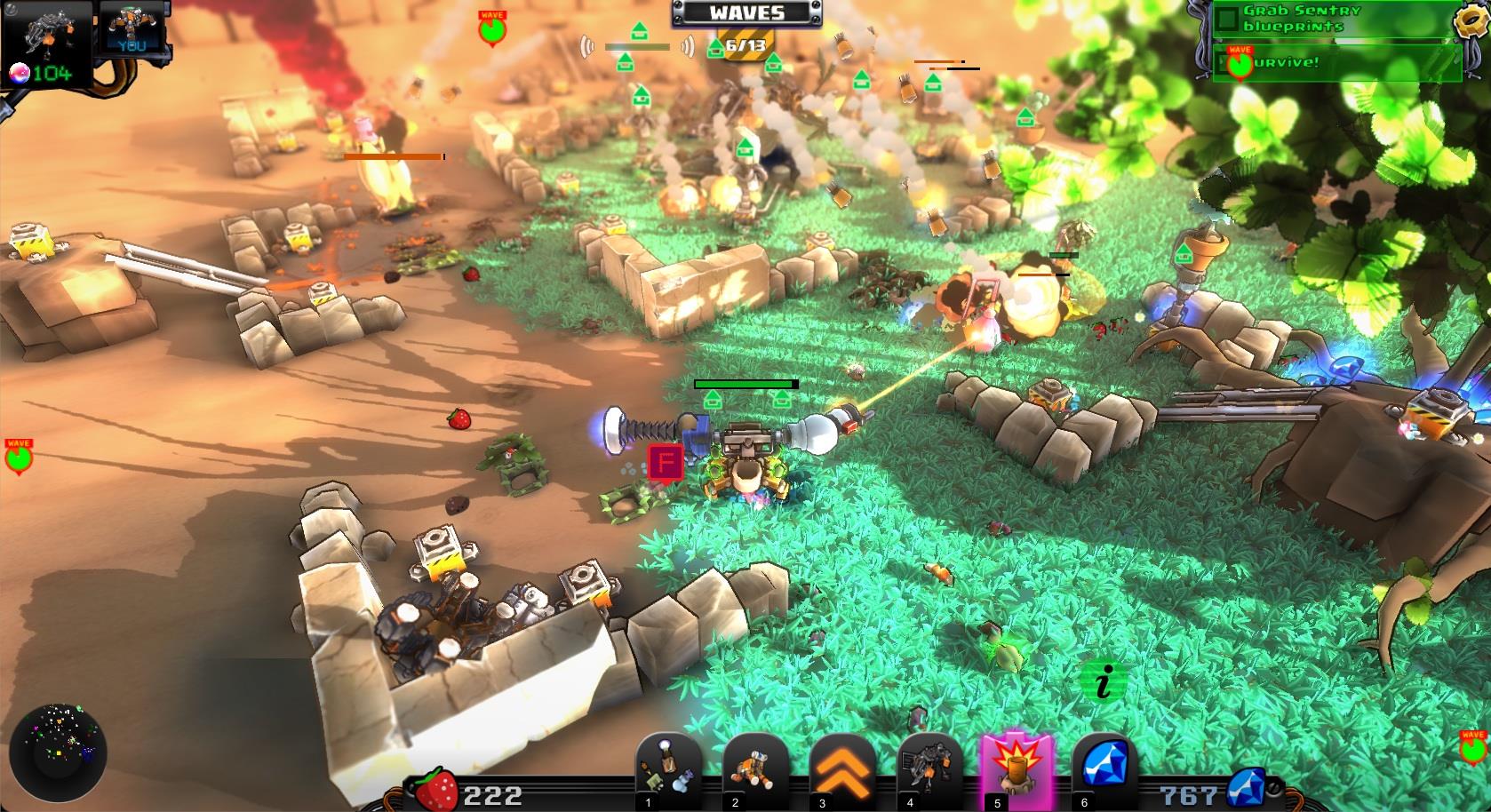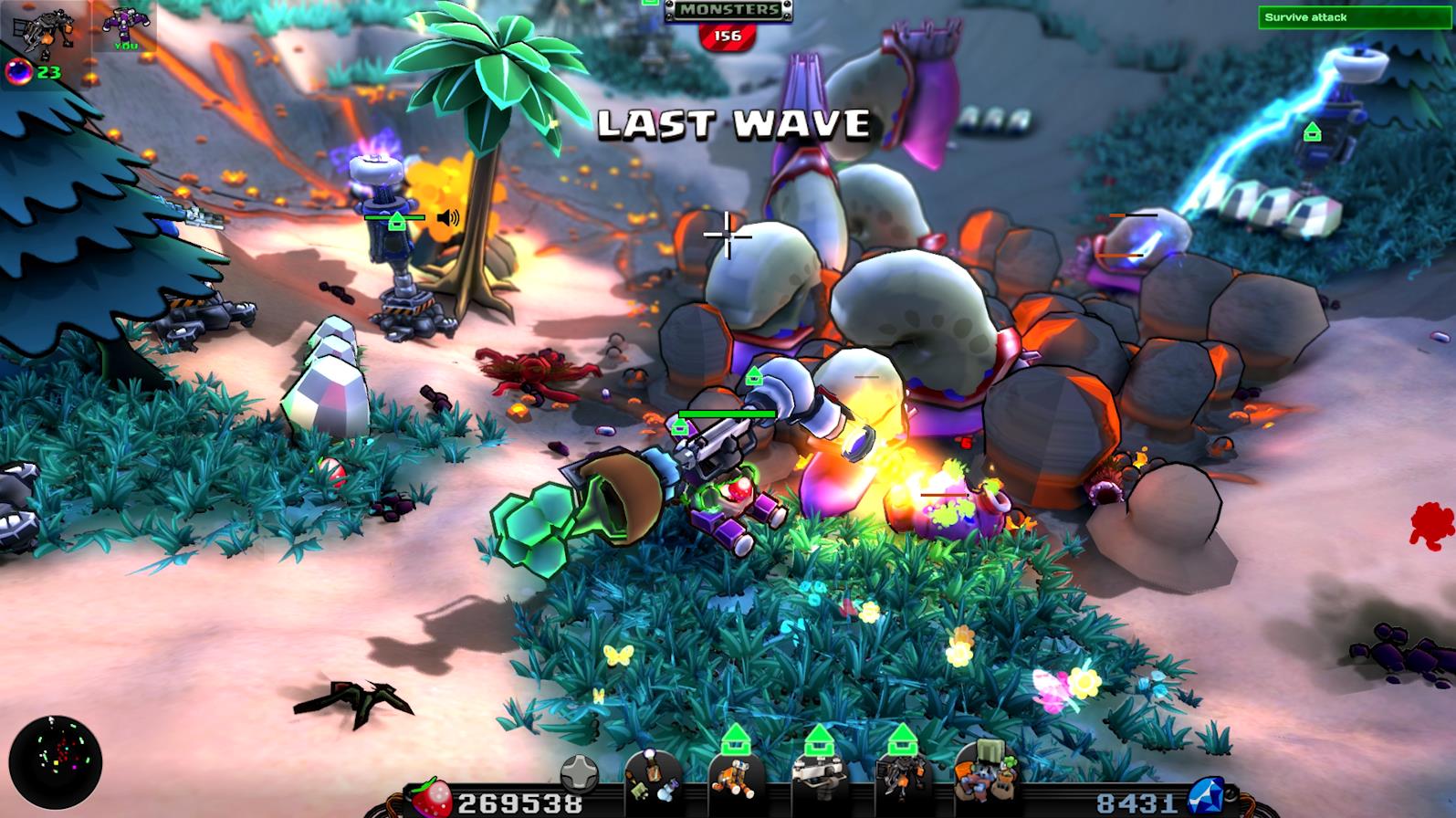What do you get when you cross a robot with a puppy, and then ask it to protect a sentient, jabbermouthed spaceship from incessant hordes of alien life? Turns out you get a game called McDroid. Join me as I try to fix my servos and grind my gears and engineer my engines as I review this game by indie studio, Elephantopia.
McDroid is an aggressively cute puppy-doggy-robot used by an annoyingly cheerful sentient spaceship to perform the tasks and things that the ship itself can’t do. Is it still slave labour when there are robots involved? Either way, the two of them are returning from a mission in space when the ship is suddenly hit by a piece of flying debris, sending the duo tumbling to the planet below. The once-friendly planet now harbours aggressive forms of life, and it’s up to McDroid to fend off these lifeforms while protecting the ship while ALSO effecting repairs, collecting enough resources to buy upgrades, and also manage to do a bit of harvesting. There are two kinds of main resource that you’re to gather: strawberries and gems. Strawberries are used to buy weapons and armour, and you spend gems to purchase special field items and upgrades. Naturally, gems are in ridiculously short supply. In typical fashion, the weapon you get at the beginning is woefully underpowered, but thankfully it’s something that can be corrected later on with copious application of aforementioned gems. And just to make things interesting, the final wave of enemies locks down strawberry production, meaning you have to finish things off with what you happen to have on you. If you lose an essential laser turret at this crucial stage, too bad.

While the first level starts off simple enough, the difficulty ramps up with dizzying rapidity. Unlike many tower defense games, McDroid, interestingly enough, can either deploy the weapons she collects to various stands littered about the level, or can take a direct hand in matters and blast enemies herself. You aim the laser by rotating the camera, which takes a bit of getting used to. However, you soon figure out that using the turrets is far preferable, because those strawberries and gems aren’t going to harvest themselves. Furthermore, any strawberries you leave littered about will start to rot and work against you. And if there’s one thing this game seems to love more than anything else it’s having things work against you. Happily, any gems you collect carry over from level to level. Aside from the standard levels, there are also collections of arenas and challenge modes if you felt that the core game wasn’t difficult enough.
The game soon hits a difficulty spike, meaning you have to go back to prior levels and farm for gems to purchase upgrades at the lab. Some farming is justified, but the amounts of farming required here make the game frustratingly difficult later on, because there are some essential field elements such as bonsai trees that are also cost gems. Also, the upgrades don’t automatically apply, because you have to pay (in strawberries) to upgrade from, for example, the first laser cannon to the next and the next. To give an idea of the costs, the first laser costs five strawberries, the second seven, but the next level is a ridiculous 40 strawberries. Bear in mind that, until later levels, you have to physically romp over to each patch of strawberries and then take them back to the spaceship before you can spend them.

Aside from the difficulty, McDroid is fun and sometimes even funny. The ship is the character with the most personality here, but McDroid herself comes across as playful, even as she destroys grubs and toothed worms with her assorted arsenal of weapons. The art style is delightfully colorful, although sometimes it can be difficult to see the difference between one glowing icon on the screen and another. The most frustrating aspect of the game is that difficulty spike I mentioned earlier, and it may be enough to put some people off. A more minor, yet still annoying aspect is the game’s camera. In one frenetic level filled with foliage, the aiming reticule coincided with a tree in the way. The camera shows the black interior of the tree’s mesh instead of fading it out or making it disappear from view, meaning I couldn’t see where I was aiming. Slightly frustrating, and thankfully not an issue in every level, but it’s there.
If you enjoyed such games as Pixeljunk Monsters, you’ll have a great time with McDroid. It’s an unusual tower defense style game, and what makes it enjoyable is the fact that the monsters don’t follow the same path over and over (often enough, they’ll follow McDroid around to try and destroy her). Each level is also fairly bite-sized, and can be completed within a matter of ten or fifteen minutes. Of course, mastering a level can take much longer, and simply completing later levels may mean a fair bit of time spent redoing older levels again, buying upgrades at the lab, and then coming back to the problem stage. McDroid is still a fun little indie game with an adorable protagonist, however, and while the challenge is huge, it’s certainly not insurmountable.



